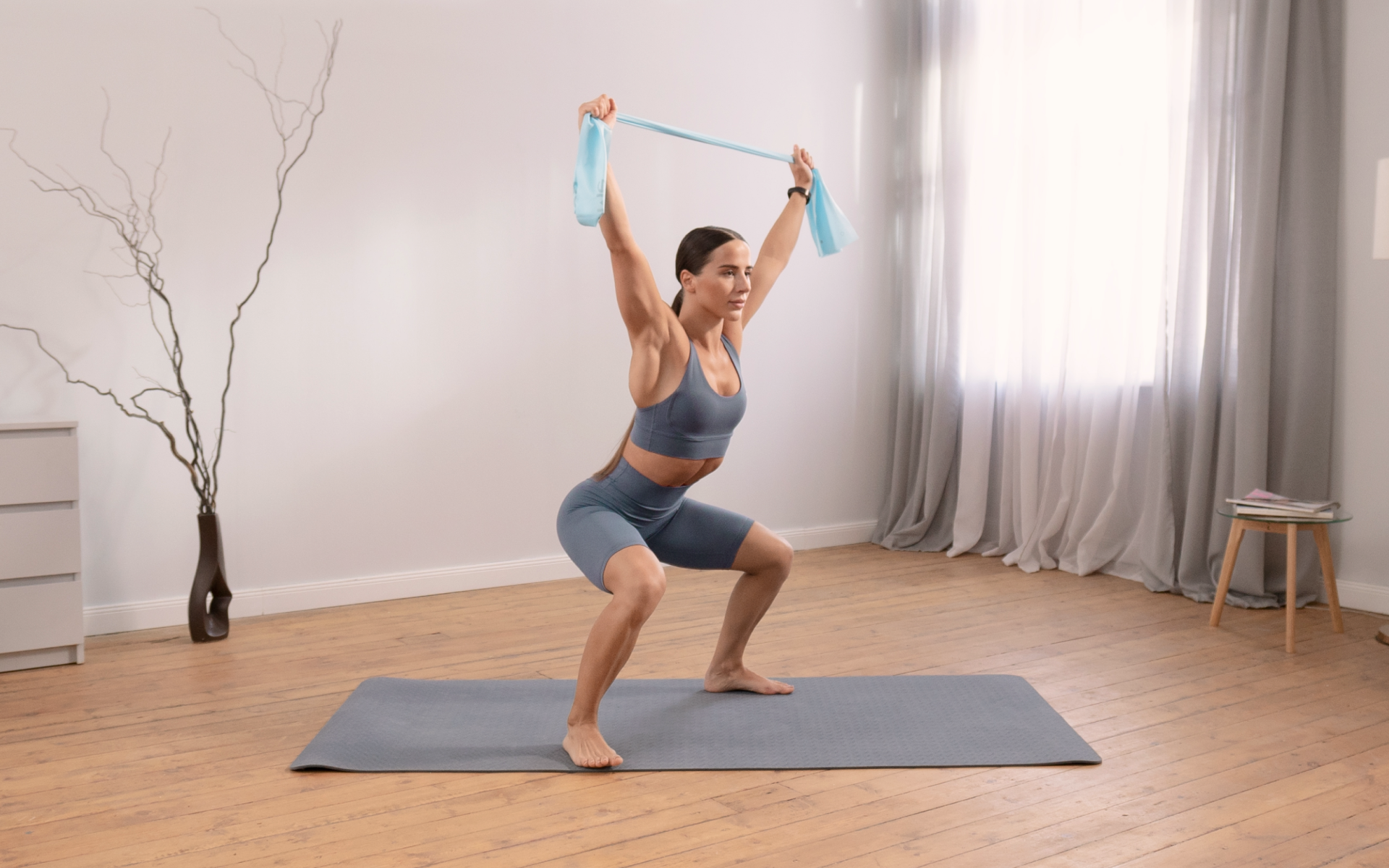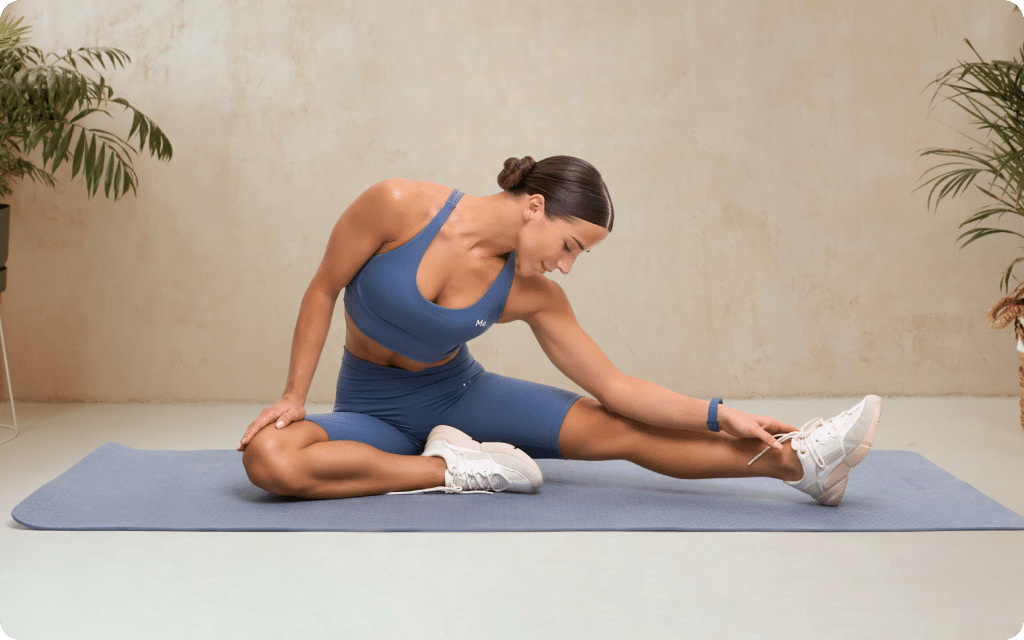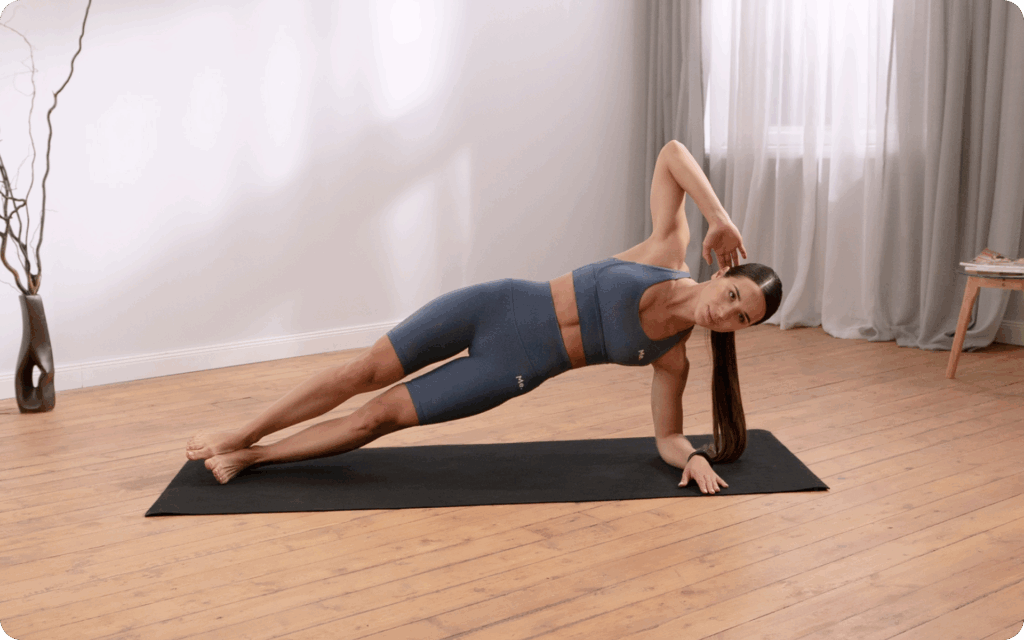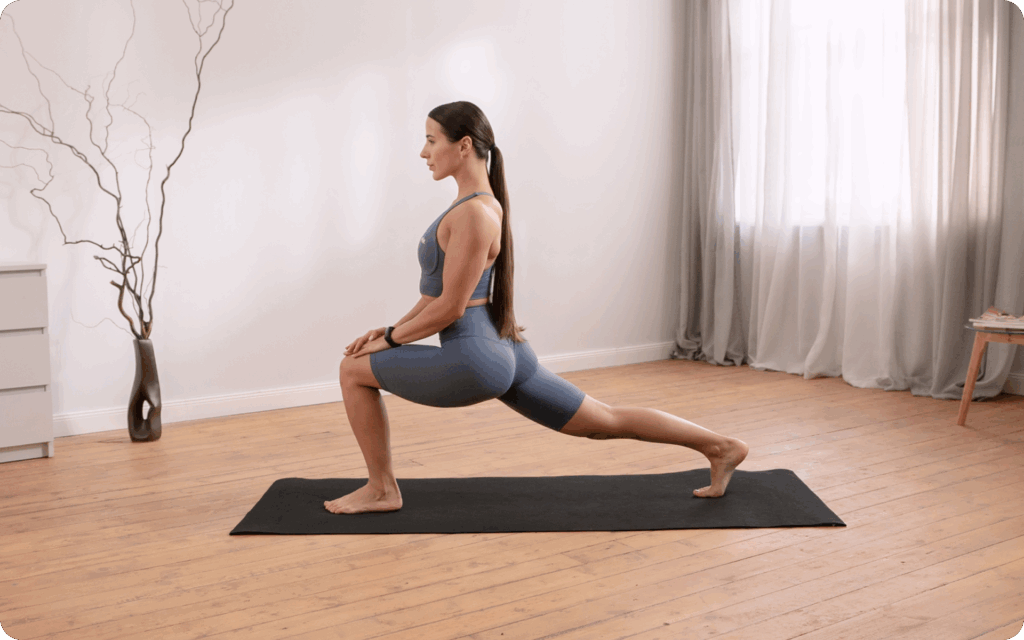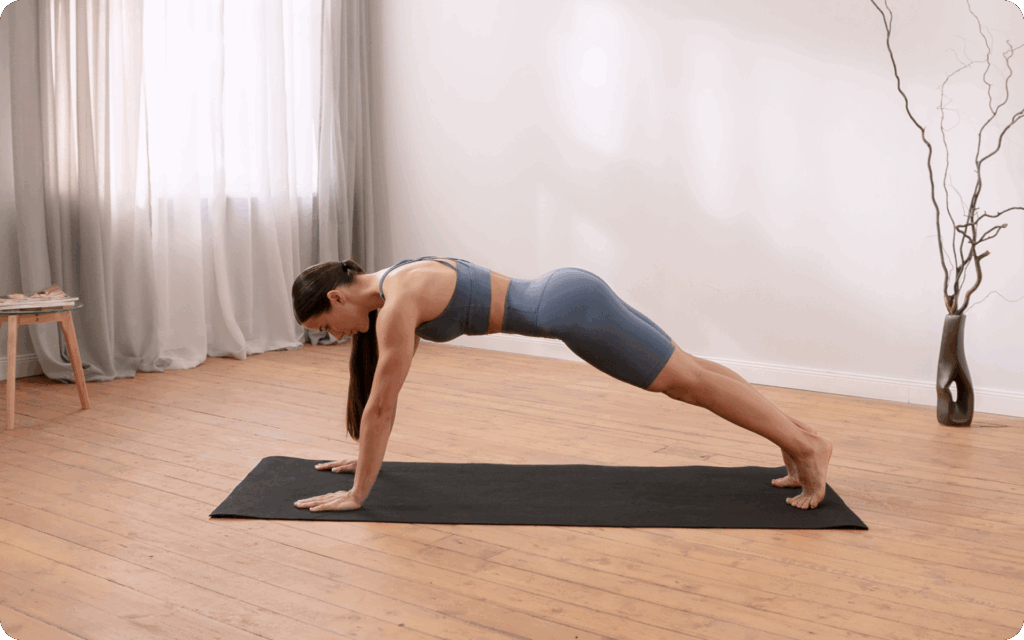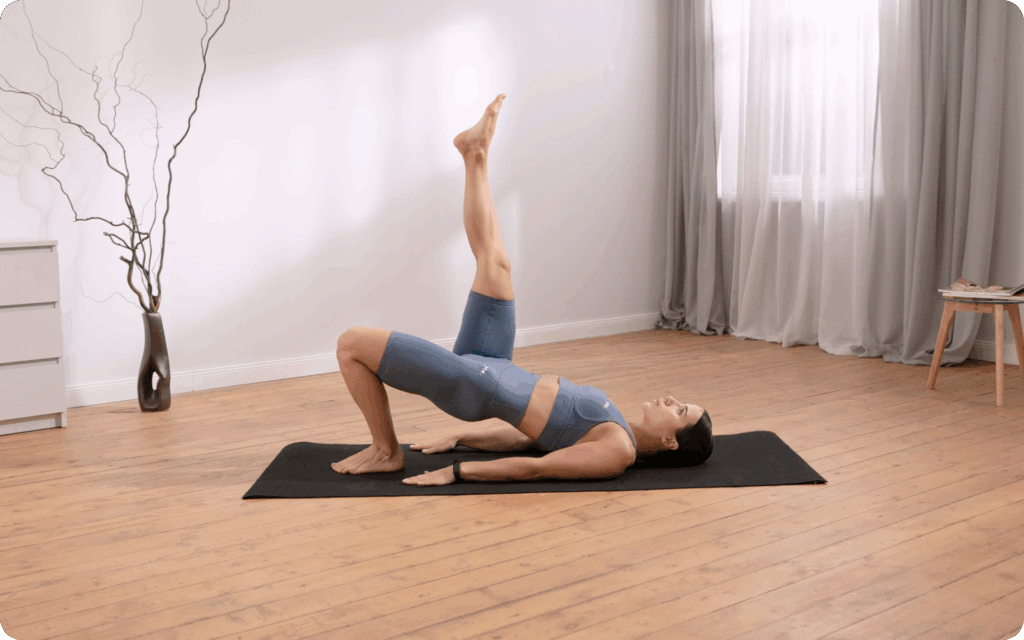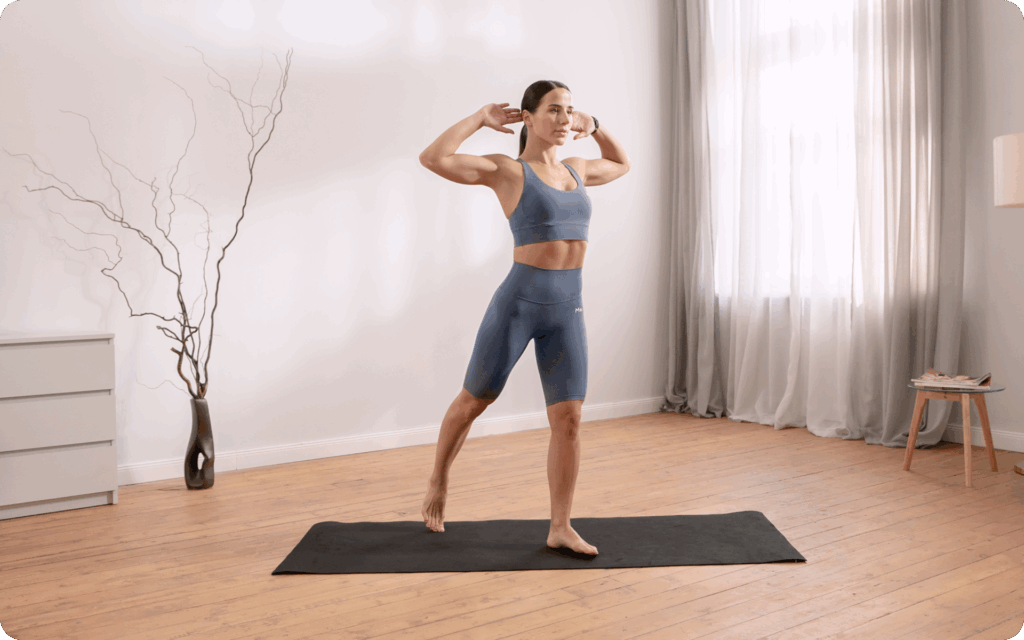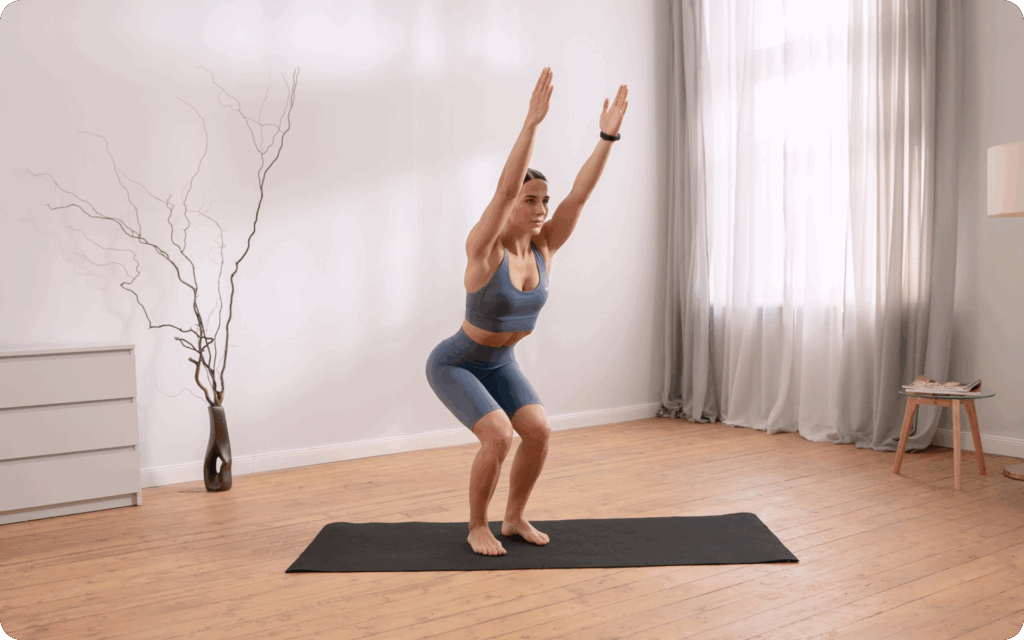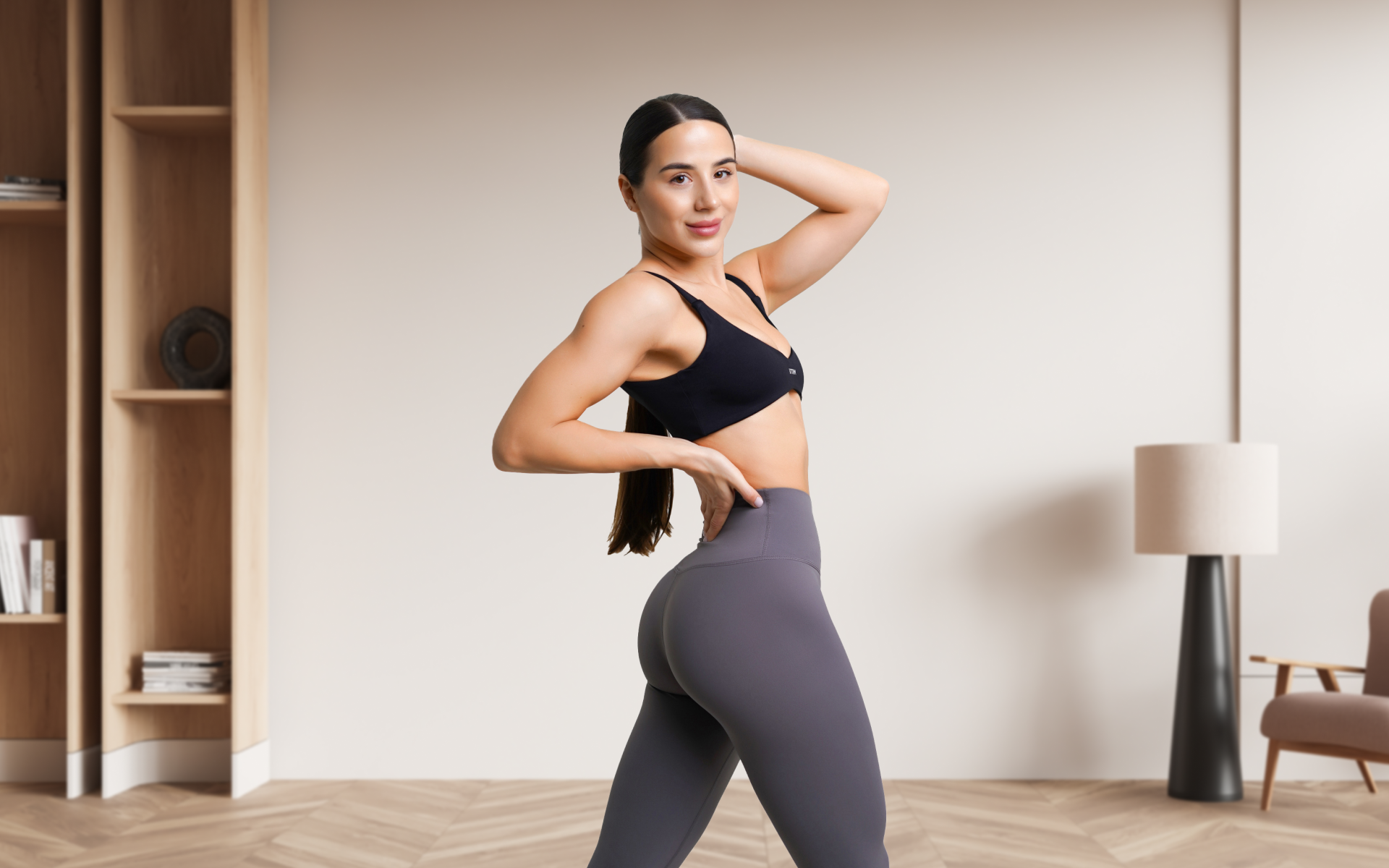Embarking on a new fitness journey can feel both exciting and overwhelming.
You might be wondering what you can realistically achieve in a short timeframe, like 2 weeks. While transformative changes require long-term consistency, a focused 2-week period is an excellent catalyst for building momentum, improving your energy, and establishing foundational habits.
This guide provides a structured, evidence-based 2-week workout plan at home designed to maximize your efforts safely and effectively.
We will break down the science of weight loss, explain how to perform key exercises with precision, and provide a day-by-day plan you can follow.
Is It Possible To Get In Shape In 2 Weeks?
The term “in shape” is subjective, but if we define it by measurable improvements in fitness and health, then yes, it is absolutely possible to make significant progress in 2 weeks. A 14-day period is sufficient to kickstart positive physiological adaptations.
Here’s what you can realistically expect:
- Improved Work Capacity: You will likely find that exercises that felt difficult on day one feel more manageable by day 14. Your ability to sustain effort for longer durations will increase as your cardiovascular system and muscular endurance adapt.
- Enhanced Neuromuscular Coordination: Your brain and muscles will become more efficient at communicating (1). This communication enhancement means your form on exercises like squats and push-ups will improve, making the movements feel smoother and more natural.
- Increased Daily Energy: Regular physical activity, even in the short term, can boost energy levels and reduce feelings of fatigue (2).
- Noticeable Habit Formation: Consistently following a plan for 14 days can help solidify exercise as part of your daily routine, making it easier to continue in the long term.
While you won’t build much muscle or achieve dramatic fat loss in just 2 weeks, this timeframe is perfect for laying the groundwork for a sustainable fitness lifestyle.
What’s A Realistic Weight To Lose In 2 Weeks?
A safe, sustainable, and realistic rate of weight loss is between 1-2 pounds (0.5 to 1 kilogram) per week (3).
Therefore, over a 2-week period, a loss of 2-4 pounds (1-2 kilograms) is a healthy and achievable target for most people.
It’s essential to understand what this initial weight loss consists of. During the first week or two of a new diet and exercise regimen, a significant portion of the weight you lose is often water weight (4).
When you reduce calorie intake, your body uses its stored glycogen (a form of carbohydrate) for energy. Each gram of glycogen is stored with about 3 grams of water (5). As you use up these glycogen stores, the associated water gets released and shed, which can lead to a rapid initial drop on the scale.
This initial weight loss is a regular part of the process.
While it’s not pure fat loss, it is a positive sign that your body is responding to the changes you’re making. The key is to remain consistent beyond this initial phase to target more sustainable fat loss.
If you’re curious about the 2 week weight loss, check out our earlier article.
Read more: 10 Best Foods For Cutting Weight And Getting Lean
What Is A 2 Week Workout Plan At Home To Lose Weight Safely?
What is a simple 2 week workout plan at home for weight loss?
We developed this 2-week workout plan to lose weight to optimize your time and effort by combining different types of training. The plan integrates resistance training to build and preserve muscle, high-intensity interval training (HIIT) for cardiovascular fitness, and moderate-intensity cardio for consistent energy expenditure.
Key Training Concepts Explained:
- Resistance Training (RT): This involves working your muscles against an opposing force (e.g., bodyweight, bands, dumbbells) (6). RT is crucial during weight loss because it signals your body to preserve lean muscle mass, which keeps your metabolism elevated (7).
- HIIT (High-Intensity Interval Training): This training style involves short bursts of all-out effort (e.g., 30 seconds) followed by brief recovery periods. It’s a time-efficient way to improve cardiovascular health and burn calories (8).
- MICT (Moderate-Intensity Continuous Training): This is steady-state cardio, like a brisk walk or light jog, performed at a consistent pace where you can still hold a conversation. It’s excellent for burning calories without causing excessive strain (9).
- RPE (Rate of Perceived Exertion): A scale from 1-10 that measures how hard an exercise feels to you. RPE 1 is resting, while RPE 10 is your absolute maximum effort (10). We will use this scale to guide your intensity.
The following is a comprehensive 2-week workout plan at home for weight loss.
It includes options for a 2-week workout plan at home no equipment, and for a 2-week workout plan at home with weights, assuming access to dumbbells.
The BetterMe: Health Coaching app will provide you with a host of fat-frying fitness routines that’ll scare the extra pounds away and turn your body into a masterpiece! Get your life moving in the right direction with BetterMe!
Week 1: Building The Foundation
The focus of week 1 is on learning the movements, establishing a routine, and working at a controlled intensity to allow your body to adapt.
Aim for an RPE of 7-8 on your working sets.
Day 1: Full Body Strength A (30-40 minutes)
- Warm-up (5 min): 60 seconds of jogging in place, 10 arm circles forward and backward, 10 torso twists, 10 cat-cows, 10 walking lunges.
- Workout Circuit (3 rounds): Perform each exercise back-to-back with 60-90 seconds of rest between rounds.
- Bodyweight Squats (or Goblet Squats with weight): 10-15 reps
- Push-ups (on knees or toes): 8-12 reps
- Glute Bridges (or with weight on hips): 15-20 reps
- Plank: Hold for 30-45 seconds
- Cool-down (5 min): Hold each stretch for 30 seconds: quad stretch, hamstring stretch, chest stretch.
Day 2: MICT Cardio & Core (25-35 minutes)
- Workout: 20-30 minutes of brisk walking, jogging in place, or using a stationary bike. Maintain a pace where you can speak in short sentences (RPE 4-5).
- Core Finisher (2 rounds):
- Dead Bug: 12 reps (6 per side)
- Side Plank: Hold for 20-30 seconds per side
Day 3: Full Body Strength B (30-40 minutes)
- Warm-up (5 min): Same as Day 1.
- Workout Circuit (3 rounds): Perform with 60-90 seconds rest between rounds.
- Romanian Deadlifts (RDLs) (with or without weights): 12-15 reps
- Dumbbell Rows (or Banded Rows/Bodyweight “Supermans”): 10-15 reps
- Alternating Lunges (or with weights): 10-12 reps per leg
- Hollow Body Hold: Hold for 20-30 seconds
- Cool-down (5 min): Hold each stretch for 30 seconds: hamstring stretch, glute stretch (pigeon pose), lat stretch.
Day 4: Active Recovery
- Engage in light activity, such as a 20-30 minute walk, or gentle stretching and foam rolling. The goal is to move your body without causing significant strain.
Day 5: HIIT (20 minutes)
- Warm-up (5 min): Light jogging, high knees, butt kicks.
- Workout (10 rounds):
- 30 seconds of High Knees
- 30 seconds of rest (walk in place)
- Cool-down (5 min): Slow walking and light stretching.
Day 6: Full Body Strength A (35-45 minutes)
- Repeat Day 1’s workout, but increase to 4 rounds instead of 3. Try to maintain good form.
Day 7: Active Recovery
- Light walking, yoga, or stretching for 20-30 minutes.
Week 2: Increasing The Intensity
In week 2, we progress by increasing the volume (more reps or another round), reducing rest times, or making the exercises more challenging.
Aim for an RPE of 8-9 on working sets. This is a great week to try the 2 week workout plan at home with weights if you have them.
Day 8: Full Body Strength B (35-45 minutes)
- Warm-up (5 min): Same as before.
- Workout Circuit (4 rounds): Perform with 45-60 seconds rest between rounds.
- Romanian Deadlifts (RDLs) (with or without weights): 15 reps
- Dumbbell Rows (or Banded Rows/Bodyweight “Supermans”): 12-15 reps
- Alternating Lunges (or with weights): 12-15 reps per leg
- Hollow Body Hold: Hold for 30-45 seconds
- Cool-down (5 min): Stretching.
Day 9: HIIT Cardio & Core (25 minutes)
- Warm-up (5 min).
- Workout (12 rounds):
- 30 seconds of Burpees (or modified step-back burpees)
- 30 seconds of rest
- Core Finisher (3 rounds):
- Dead Bug: 16 reps (8 per side)
- Side Plank: Hold for 30-40 seconds per side
Day 10: Full Body Strength A (35-45 minutes)
- Warm-up (5 min).
- Workout Circuit (4 rounds): Perform with 45-60 seconds rest between rounds.
- Bodyweight Squats (or Goblet Squats with weight): 15-20 reps. To progress, try a pause at the bottom.
- Push-ups (on knees or toes): Aim for 2-3 more reps than last week.
- Glute Bridges (or with weight on hips): 20-25 reps. Try single-leg variations for a challenge.
- Plank: Hold for 45-60 seconds.
- Cool-down (5 min).
Day 11: Active Recovery
- A 30-minute brisk walk or light bike ride.
Day 12: Full Body Strength B (35-45 minutes)
- Repeat Day 8’s workout, focusing on perfect form and controlling the tempo (e.g., 3 seconds to lower, 1 second to lift).
Day 13: MICT Cardio (30-40 minutes)
- Choose an activity you enjoy: Jogging, dancing, cycling, or a long, brisk walk.
Keep your heart rate in a moderate zone (RPE 4-5) for the duration.
Reasons why BetterMe is a safe bet: a wide range of calorie-blasting workouts, finger-licking recipes, 24/7 support, challenges that’ll keep you on your best game, and that just scratches the surface! Start using our app and watch the magic happen.
Day 14: Active Recovery & Reflection
- Light stretching and mobility work. Take time to reflect on your progress. Notice how your energy levels have changed and how much stronger you feel.
This 2 week workout plan at home for beginners is a fantastic starting point. For those looking for an even bigger push, you can add another round to your strength circuits.
For more details about the 2-week workout challenge, take a look at our prior publication.
How Can I Speed Up My Weight Loss?
While the workout plan is a critical component, several other factors can significantly accelerate your progress. Weight loss is primarily dictated by achieving a consistent energy deficit, meaning you burn more calories than you consume.
Here are evidence-based strategies to enhance your weight loss results:
- Prioritize Protein Intake
Consuming adequate protein is essential. Aim for 1.6-2.0 grams of protein per kilogram of body weight (11).
Protein is highly satiating (keeps you feeling full), has a higher thermic effect of food (burns more calories during digestion), and is critical for preserving muscle mass during a calorie deficit (12, 13).
- Increase Non-Exercise Activity Thermogenesis (NEAT)
NEAT is the energy expended for everything we do that is not sleeping, eating, or formal exercise. This type of movement includes walking to your car, typing, fidgeting, and doing chores (14).
Consciously increasing your NEAT by taking the stairs, pacing while on the phone, or aiming for 8,000-10,000 steps per day can dramatically increase your total daily calorie burn.
- Mindful Eating
Pay attention to your body’s hunger and fullness cues. Avoid distractions while eating, chew your food thoroughly, and stop eating when you feel satisfied, not stuffed. This simple practice can help reduce overall calorie intake without restrictive dieting (15).
For those serious about their nutrition, a structured plan and tracking your food intake can be very effective.
The benefits of mindful eating are significant when trying to build strength with a 2-week workout plan to gain muscle while managing fat loss.
Our previous post goes into great detail about the 2 week high-protein diet menu.
Read more: Are the Best Diet Shakes for Weight Loss Effective?
Does Drinking Water Help With Weight Loss?
Yes, it can to some extent. Adequate water intake is a simple yet powerful tool for weight loss. Research supports its role in several ways:
Appetite Suppression
Drinking a glass of water before a meal can help you feel fuller, leading you to consume fewer calories. Studies have shown that individuals who drank 500 ml of water before each meal lost more weight than those who did not (16).
Slight Metabolic Boost
Water can temporarily increase your resting energy expenditure. The body has to work to warm the water to body temperature, a process that burns calories. This effect is modest but can contribute to your overall daily energy burn (17).
Improved Exercise Performance
Dehydration can impair your strength, power, and endurance (18).
Staying well-hydrated ensures you can perform at your best during workouts, allowing you to work harder and burn more calories.
Aim for 2-3 liters of water per day, or more if you are exercising intensely or in a hot environment.
How Much Sleep Do I Need To Get Fit?
Sleep is a non-negotiable component of any fitness and weight loss plan.
You can build a solid foundation of exercise performance and recovery on getting enough sleep. For most adults, 7-9 hours of quality sleep per night is the recommended amount.
When you are sleep-deprived, several negative physiological changes occur:
- Hormonal Imbalance: Lack of sleep increases cortisol (a stress hormone that can promote fat storage) and ghrelin (the hunger hormone) while decreasing leptin (the satiety hormone). This hormonal cocktail makes you hungrier, more prone to cravings for high-calorie foods, and more likely to store fat (19, 20).
- Reduced Muscle Repair: The majority of muscle repair and growth happens during deep sleep when growth hormone is released. Skimping on sleep compromises your body’s ability to recover from workouts, increasing injury risk and hindering progress (21).
- Decreased Fat Loss: Studies have shown that even when calorie intake is equal, sleep-deprived individuals lose significantly less fat and more muscle than those who get adequate rest (22).
Prioritizing a consistent sleep schedule is one of the most effective ways you can support your fitness goals.
Yes. In two weeks, you can expect to see measurable progress in your strength, endurance, and exercise technique. You may feel more energetic and notice that your clothes fit slightly better. While visible muscle growth takes longer, the initial neuromuscular adaptations are a crucial and motivating sign of progress. It is not possible to spot-reduce fat from a specific area, such as the stomach (23). A flatter tummy results from overall body fat reduction, which takes time and a consistent calorie deficit. In 2 weeks, you can reduce bloating by improving your diet and hydration, which can make your stomach appear flatter, but significant midsection fat loss requires a longer-term approach. Signs of over-exercising, or overtraining syndrome, include persistent muscle soreness, elevated resting heart rate, decreased performance, chronic fatigue, mood disturbances or irritability, and difficulty sleeping (24). If you experience these symptoms, it is crucial to take extra rest days and reduce your training intensity. Walking is an excellent low-impact form of exercise that can significantly help beginners get in shape. Consistent brisk walking (aiming for 10,000 steps per day) improves cardiovascular health, supports weight management, and strengthens lower-body muscles (25). To create a more well-rounded fitness level, it is beneficial to supplement walking with resistance training to build and maintain overall muscle mass and strength.Frequently Asked Questions
Is it possible to see gym progress in 2 weeks?
Can I flatten my tummy in 2 weeks?
What are signs of over-exercising?
Can you get in shape by just walking?
The Bottom Line
A 2-week commitment is a decisive first step on your fitness journey.
This plan provides the structure and science-backed methods to make that time as productive as possible. Remember that consistency is more important than intensity, especially when you are starting out.
Listen to your body, focus on your form, and fuel yourself with nutritious food and adequate rest. The positive changes you feel after these 14 days can be the motivation you need to build a lasting, healthy lifestyle.
DISCLAIMER:
This article is intended for general informational purposes only and does not serve to address individual circumstances. It is not a substitute for professional advice or help and should not be relied on for making any kind of decision-making. Any action taken as a direct or indirect result of the information in this article is entirely at your own risk and is your sole responsibility.
BetterMe, its content staff, and its medical advisors accept no responsibility for inaccuracies, errors, misstatements, inconsistencies, or omissions and specifically disclaim any liability, loss or risk, personal, professional or otherwise, which may be incurred as a consequence, directly or indirectly, of the use and/or application of any content.
You should always seek the advice of your physician or other qualified health provider with any questions you may have regarding a medical condition or your specific situation. Never disregard professional medical advice or delay seeking it because of BetterMe content. If you suspect or think you may have a medical emergency, call your doctor.
SOURCES:
- Effects of neuromuscular training on athletes physical fitness in sports: A systematic review (2022, frontiersin.org)
- The Effect of Chronic Exercise on Energy and Fatigue States: A Systematic Review and Meta-Analysis of Randomized Trials (2022, frontiersin.org)
- Steps for Losing Weight (2025, cdc.gov)
- Weight-Loss and Maintenance Strategies – Weight Management (2004, ncbi.nlm.nih.gov)
- Relationship between muscle water and glycogen recovery after prolonged exercise in the heat in humans (2015, link.springer.com)
- Resistance training – health benefits (2022, betterhealth.vic.gov.au)
- Exercise and dietary recommendations to preserve musculoskeletal health during weight loss in adults with obesity: A practical guide (2025, link.springer.com)
- Evidence-Based Effects of High-Intensity Interval Training on Exercise Capacity and Health: A Review with Historical Perspective (2021, pmc.ncbi.nlm.nih.gov)
- What Does ’Moderate-Intensity Exercise’ Mean Anyway? (2024, health.clevelandclinic.org)
- The Rate of Perceived Exertion (RPE) Scale Explained (n.d., nasm.org)
- International Society of Sports Nutrition Position Stand: protein and exercise (2017, jissn.biomedcentral.com)
- Clinical Evidence and Mechanisms of High-Protein Diet-Induced Weight Loss (2020, pmc.ncbi.nlm.nih.gov)
- Preserving Healthy Muscle during Weight Loss (2017, sciencedirect.com)
- A Clinician’s Guide to Non-Exercise Activity Thermogenesis (NEAT) | Obesity Medicine Association (2025, obesitymedicine.org)
- Mindful Eating: The Art of Presence While You Eat (2017, diabetesjournals.org)
- Water Consumption Increases Weight Loss During a Hypocaloric Diet Intervention in Middle‐aged and Older Adults (2009, onlinelibrary.wiley.com)
- Effect of ‘Water Induced Thermogenesis’ on Body Weight, Body Mass Index and Body Composition of Overweight Subjects (2013, pmc.ncbi.nlm.nih.gov)
- Dehydration and its effects on performance (n.d., us.humankinetics.com)
- The Impact of Sleep and Circadian Disturbance on Hormones and Metabolism (2015, pmc.ncbi.nlm.nih.gov)
- Effects of acute sleep loss on leptin, ghrelin, and adiponectin in adults with healthy weight and obesity: A laboratory study (2022, onlinelibrary.wiley.com)
- Sleep and muscle recovery: endocrinological and molecular basis for a new and promising hypothesis (2011, pubmed.ncbi.nlm.nih.gov)
- Sleep Deprivation: Effects on Weight Loss and Weight Loss Maintenance (2022, pmc.ncbi.nlm.nih.gov)
- A proposed model to test the hypothesis of exercise-induced localized fat reduction (spot reduction), including a systematic review with meta-analysis (2022, hummov.awf.wroc.pl)
- Overtraining Syndrome: A Practical Guide (2012, pmc.ncbi.nlm.nih.gov)
- Walking for Exercise (2023, nutritionsource.hsph.harvard.edu)
